|
Word Gems
exploring self-realization, sacred personhood, and full humanity
Theory-of-Everything
"You can recognize truth by its beauty and simplicity. When you get it right, it's obvious that it's right." Dr. Richard Feynman
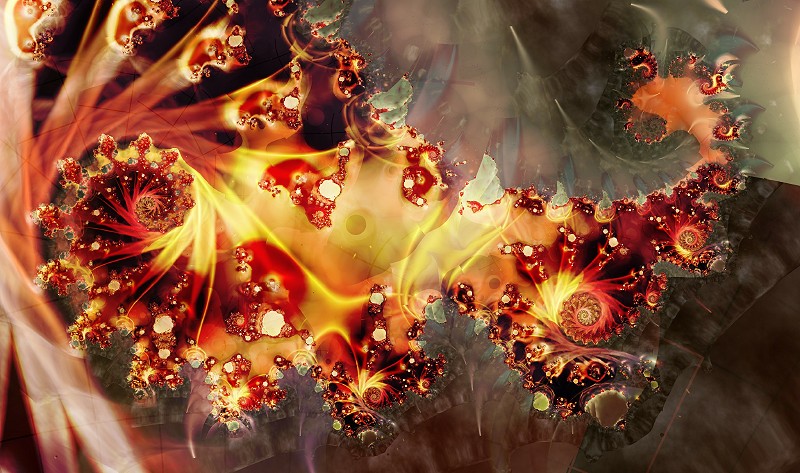
|
Editor's prefatory comment:
Einstein and Bohm, while in sync on most issues, disagreed on the nature of ultimate reality. As reported in the article featuring their discussion:
Einstein contended, regarding interpreting reality, “The Lord is subtle but not malicious, and ultimately the Lord will show us the ultimate level of reality.” But Bohm thought, no, below that there is another level of reality, and below that another. There are an infinite number of realities. On this Bohm and Einstein didn’t agree. For Bohm the universe was inexhaustible; for Einstein, there was an ultimate level, and that would be the end of physics.
Because the universe is inexhaustible in terms of its wonder and marvel, meaning, there is no end to knowledge acquisition, the label “theory of everything” is rather inappropriate. We will never know enough to be able to confidently say, I’ve got it now, I can speak to the whole. This will never happen.
“Theory of Everything,” at best, is a provisional marker, our current best estimate, on our way to the receipt of more light and understanding.
|
the only mystery of science
|
The Double-Slit experiment, "impossible … to explain in any classical [Newtonian] way, [embodies] the heart of quantum mechanics. In reality, it contains the only mystery [of science]."
Dr. Richard Feynman
1965 Nobel laureate in physics
|
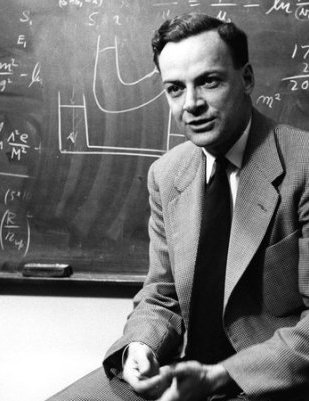 |
The “Double-Slit” experiment offers a view of reality, its architectonic underpinnings, so counter-intuitive, so non-common sensical, that great scientific minds have called it “the only mystery” of science.
Dr. Feynman is telling us that the fundamental secret of the essence of Reality is hidden within the "Double-Slit" experiment. All of the other sciences must be reevaluated in light of new information from the "Double-Slit."
|
Editor's note:
T.H. Huxley once said that "The great tragedy of science is the slaying of a beautiful hypothesis by an ugly fact."
No facts are ugly. Reality is what it is. Presuming otherwise, we ourselves supply the "ugly."
Facts which do not conform to pet-theories, an assault on cultish dogmatism, are called ugly, "wierd science," ridiculed, or more likely, are ignored, treated as pariah; and, like Lana, opponents try to act "as if it never happened."
This is what materialistic science -- science so-called; like censoring religionists -- has attempted to do with a burgeoning tidal wave of new information, new experiments, which signal the end of a materialistic world-paradigm.
This page has been created to offer a chronology of the new information which flows fast now. Consciousness, not matter, is the ground of all reality, the evidence for which is presently engulfing us -- unraveling the entire edifice of the materialistic empire.
Please check back regularly for postings below.
special note:
In order to more fully appreciate the technical aspects of the "Double-Slit" discussed below, you will want to spend some time viewing several youtube videos which offer basic information on the inner-workings of Nature.
I recommend that you view each of the following videos:
Physicist Tom Campbell explains Double-Slit (7 minutes)
Physicist Tom Campbell explains Double-Slit, Delayed-Choice & Eraser (7 minutes)
Physicist Tom Campbell explains Double-Slit, Delayed-Choice & Eraser, an excellent expanded discussion offering cogent overview (44 minutes)
Physicist Tom Campbell explains Double-Slit, Delayed-Choice & Eraser (1:42). Tom reports on ANU (Australian National University) physicists who carried out an experiment designed by the famous Princeton physicist John Archibald Wheeler (who coined the terms "black hole" and "it from bit"). The findings of the experiment answer, and negate, charges of materialist physicists who have resisted the implications of the Double-Slit Experiment.
Some physicists say that the Double Slit Experiment acts like a time-machine, that events of the past can be altered. But other physicists like Tom Campbell state that this is the wrong interpretation of the data. I side with Tom, and I’ll tell you why.
Physicists of the materialist persuasion have resisted the implications of the consciousness-based Double-Slit experiment. Tom Campbell discusses the history of this denial and also what happened when a new experiment was performed which eviscerated the basis of the materialists’ refusal.
Editor’s note: The reader is invited to also review two sister-articles, Quantum Mechanics and the Double-Slit Experiment.
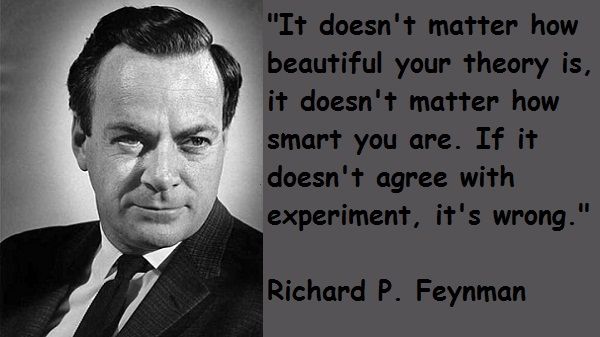
|
|
'the truth is not a fragile thing and will eventually rise to the top of a heap of competing ideas'

Physicist Tom Campbell, in clear language, explains the history and significance of the quantum mechanics revolution of 100 years ago, how its implications were denied by materialists, and why, as Tom sees it, its proper explication might lead to a better world, free from the power-control-force paradigm afflicting all of us today.
READ MORE
|
September 19, 2018
In the last few months, physicist Tom Campbell has raised $300,000 -- more than twice the amount he felt he needed -- from 1200 enthusiastic donors worldwide, to pursue a better understanding of Reality via “the double-slit.” Currently, he is interviewing, searching for, the best university physics lab capable of conducting, in a competent and credible way, these new experiments.
Tom says he expects the new experiments to be completed in the next 6 to 12 months. He regularly posts videos on the progress of this effort. You can keep track of them HERE.
For a great many years, physicist Tom has been investigating this subject, the nature of Reality. The “double-slit,” along with related experiments, strongly point to the view that Consciousness, not matter, is the essence and undergirding of all things.
Our problem, he says, is that “we’re all materialists at heart.” It’s not really our fault. We tap our fingers on what seems to be a very solid table. We walk on what seems to be very solid ground. But when we “drill down” to the level of sub-atomic particles, and below, it all vanishes into a nothingness. And so, all of this apparent solidity and substantiveness, upon closer inspection, just disappears. What are we to make of this?
The best theory to explain the nature of Reality, according to the evidence we have so far, is that we live in a kind of "simulation," a sort of “virtual reality.” As we search for a metaphor to help ourselves understand, Tom says, it’s like being in a multi-player video game, like “World Of Warcraft” or “The Sims.” The characters in “Warcraft” are solid to each other, the rocks and trees are solid to them, but it’s not a real world. You can’t climb into the computer and enter that world. It doesn’t really exist. It’s all just pixels of light in complex arrangement offering a simulation of reality. And the characters in “The Sims” act as if they’re totally independent, living their own drama-filled lives, but, we all know, they exist merely at the pleasure of a computer programmer and "live" only inside a computer-box.
This does not mean that we, in our truest essence, are like characters in "The Sims." We, our truest selves, are one with Universal Consciousness and are part of the only thing that's real. But our material bodies, solid as they seem to be, are "simulations"; our youthful etheric body to be enjoyed in Summerland is also a "simulation," but a convincing one.
The “double-slit,” and related experiments, strongly suggests the existence of a Universal Consciousness in which we all “live and move and have our being.” We'll know more soon, but that table which we think is so solid, if we look at its core essence, is just a complex dance of tiny particles, “pixels of light,” if you will, carefully arranged, which, themselves, when we “pull back the curtain,” disappear into an infinite sea of Universal Consciousness.
In my other articles, "Ultimate Reality," for example, I have stated that “only Consciousness is real”; that, this world, and every other world on the other side, derives its apparent existence from a Universal Consciousness. The great English scientist, Sir Oliver Lodge, and also Professor Frederick Myers, in their investigations of the afterlife, concluded that both our world and Summerland are “worlds of illusion.” But then, all worlds are worlds of illusion.
This does not mean that people in Summerland don’t walk on solid ground or don’t have tangible flowers in their gardens, but that the substructure of Reality is not material in essence. As one physicist put it, “Whatever matter is made of, it’s not matter.” There are no “hard little bee-bees” as fundamental constituents of sticks and stones; there are no "building blocks" of matter, as such; well, they do exist, of sorts, but when you put them "under the microscope,” so to speak, they all disappear into a nothingness.
Intuitively, at the level of "common sense," we don't believe this, it doesn't seem right to us. Having been thus conditioned all of our myopic lives, we're materialists at heart. We think we live in an objective universe where things have an existence apart from an observing consciousness, a measurement, and resultant information. But the "double-slit," the "only mystery" of science, rudely awakens us to how Reality really works.
April 27, 2019
Here is a video update from Tom and his team on the progress of arranging for the new experiments:
https://www.youtube.com/watch?v=WOurhCXtYq4
November 6, 2019
The site for the coming experiments will be the science labs at California State Polytechnic University, Pomona. In the video update, Tom and the Cal Poly PhD department head give an overview of what's to come:
https://www.youtube.com/watch?v=OwNlQXs3PlU
July 24, 2020
An update on the preparation for the experiments.
https://www.youtube.com/watch?v=i2o7KbDTkgU
September 14, 2020
Equipment purchased for the experiments.
https://www.youtube.com/watch?v=-9ftrF0Dwzg
December 17, 2020
Experiment update.
https://www.youtube.com/watch?v=7YqymQ5U0wc
May 22, 2021
Experiment update.
https://www.youtube.com/watch?v=mCL9jSGcfbk
September 27, 2021
Experiment update.
https://www.youtube.com/watch?v=3xeCmuJC0CE
September 21, 2022
Experiment update.
https://www.youtube.com/watch?v=lsFC3SgCZRQ
February, 2023
Experiment update.
https://www.youtube.com/watch?v=KT2em2bX360
February, 2024
Experiment update.
https://www.youtube.com/watch?v=pOr7fWBxKow&t=362s
July, 2024
Experiment update.
https://www.youtube.com/watch?v=QXXPbGe0nNE&t=6s
September, 2024
Tom Campbell interview on 1st experiment results 1st part
https://www.youtube.com/watch?v=eDLMivBzESU
July, 2025
David Chartrand, experiments update
https://www.youtube.com/watch?v=VKGKx-mIUC8
Thomas Campbell and David Chartrand Q & A
https://www.youtube.com/watch?v=fnTTKElHtDs
|
Editor's note:
the ‘multiverse’ hypothesis is a fraud, part of a materialistic metaparadigm
Physicist Tom Campbell was interviewed on “Awaken Atlanta.” The 37-minute discussion offered an excellent summary of how consciousness, not matter, forms the basis of reality.
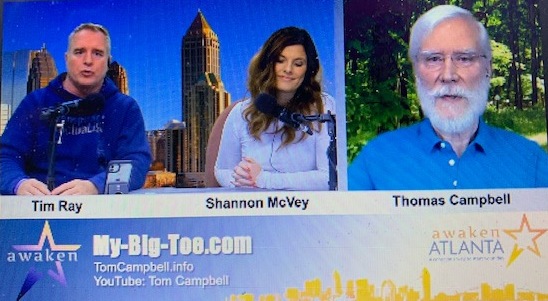
See the entire interview: https://www.youtube.com/watch?v=hotxRAQQsxc
according to the errant theory of parallel universes, every time an electron wobbles, a new universe would have to be created
Shannon McVey asked Tom how quantum physics relates to “parallel universes.” Not a scientist, she assumed that the “multiverse” was a legitimate fact-based theory. Tom politely began to dismantle her misconception, explaining, essentially, that “parallel universes” has no evidence to support it. It’s an idea that materialistic science puts forward to make sense – but only in a tortured way – of research data.
quadrillions of new universes per nano-second
According to the theory, every time an electron flips, changes the direction of its spin, Tom asserted, a new universe is created. Think of the quadrillions of new universes per nano-second! The complexity continues: In these brand new, resultant universes, every time an electron flips, still more universes are created.
salvaging one's metaparadigm
Essentially, Tom said, this is nonsense, and a gigantic violation of Occam's Razor, “the simplicity rule” [my term] which we see everywhere in the natural world. If we travel down the road of matter as the basis of reality, and as the research data comes in – all of it, at its core, denying the hegemony of matter – then, in order to “save face,” one must invent, on the spot, on an ad hoc basis, other theories to account for anomalies. It’s a dangerous game, called “the joker is wild” principle. It’s what you have to believe in order to salvage one’s metaparadigm.
Special note: I’ve learned much from Tom Campbell and would commend him for his great efforts in offering evidence that consciousness, not matter, creates the ground of all being.
I enjoy praising Tom, but I should point out that, according to my research, things that I’ve learned from other great scientists, there are a few subtleties which appear to be not quite correct. And since my purpose in the Word Gems writings is to strive for closer approximations of reality, allow me to list a few items which become a parting of philosophical ways with Tom.
Tom believes in reincarnation. I suggest that the evidence strongly indicates that, while we continue to learn after our passing, we do so in other worlds and dimensions, and not on planet Earth.
It seems that Tom views our primary purpose in this world as that of learning more about love. It's hard to argue against; however, my research and experience would say that love is step two in the process, with the first order of business that of coming alive to the true self. I discuss this here, and in many articles.
God, it would appear, is a “collective” in Tom’s view, with each of us as component part. I would agree with this, but, even so, it also seems to me that there is some grander, primal, central, unifying aspect to be called God. I like the metaphor of Parent. It’s interesting that the channeled testimonies secured by Randall and French reveal that this very question is also debated on the other side.
Tom speaks of “virtual reality” to describe our mortal existence, closely akin to a computer game, he says. I think there’s much merit to Tom’s analogy, but I would emphasize a little more Sheldrake’s theory of “morphic fields.” See much discussion on this in the “Evolution” article.
|
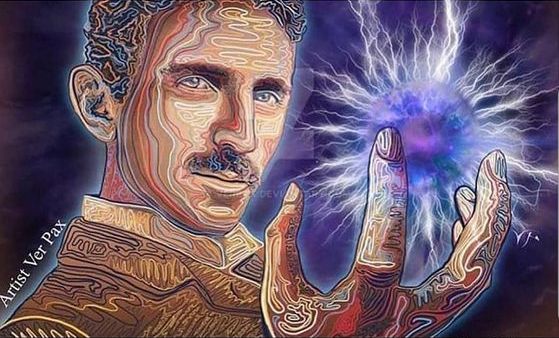 |
|
|
“The day science begins to study non-physical phenomena [that is, the primacy of consciousness], it will make more progress in one decade than in all the previous centuries of its existence.”
“If you want to understand the Universe, think of energy, frequency, and vibration.”
“My brain is only a receiver, in the Universe there is a core from which we obtain knowledge, strength, and inspiration. I have not penetrated into the secrets of this core, but I know that it exists.”
Nikola Tesla
|
|
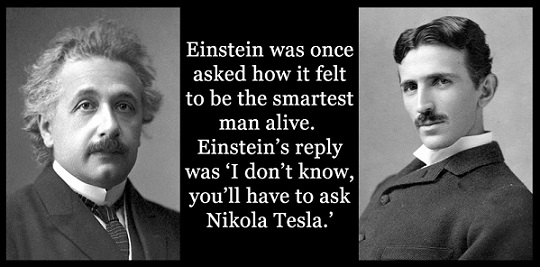 |
|
the most profound concept in all of science
This is the view of physics Professor Jim Al-Khalili, as offered in the documentary “Atom.”
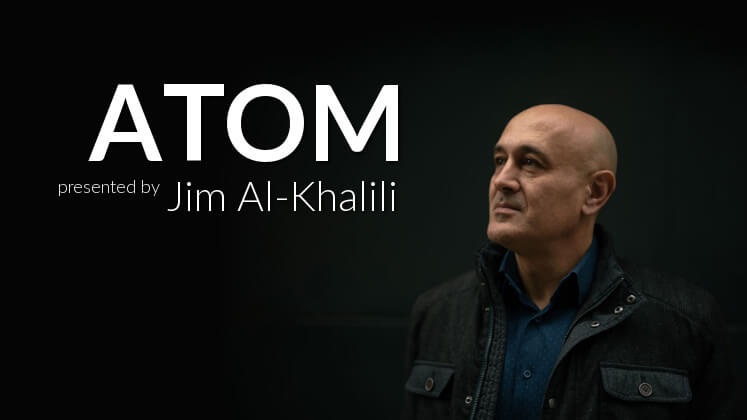
Superlatives concerning scientific marvel are often associated with Einstein, and rightly so, given his discoveries that time and space are not absolute but vary with the speed of light. But Professor Khalili reserves highest laudation for something and someone else – an insight of Werner Heisenberg concerning the hidden workings of the atom.
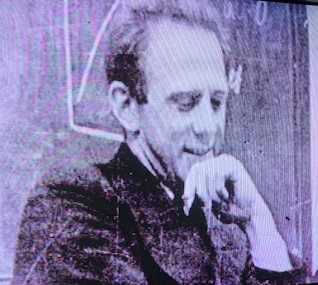
In 1926 Heisenberg was working as an assistant to Niels Bohr at his mentor’s institute in Copenhagen.
Professor Khalili takes us to one of the attic rooms where Heisenberg spent his evenings studying.
Bohr would come, night after night, to debate the nature of the atom with Heisenberg; the level of argumentation so severe at times, says Khalili, that at one point Heisenberg was brought to tears. The intensity of the dialogue was fueled by fierce, and even hostile, rivalry within the physics community. There were two main camps: (1) the quantum radicals led by Bohr and Heisenberg, and (2) those of a more Newtonian view, the classicalists, managed by Einstein and Shroedinger. Einstein seemed to be winning, although Bohr and company knew the classical view could not support all of the data.
One evening, Heisenberg peered from this attic window on the park below.
a sudden flash inspiration; arguably, the most profound insight in the entire history of science
Heisenberg’s spirits were at low ebb. Recently he’d attended a physics conference where, from the audience, he’d confronted Schrodinger, but was booed by other attendees and was told to sit down, and leave. Yet, doggedly, Heisenberg maintained that the more-Newtonian view was incorrect.
Both sides had been searching for a model, a metaphor, some visual aid to explain the very unusual characteristics of the atom. More than 15 years earlier, Rutherford suggested the “miniature solar-system” idea, but this proved wanting. Schrodinger and his famous “wave equation” put forward that the orbit of the electron vibrated so much that it was more like a cloud. Bohr added the “quantum leap” concept, that the atom was like a tall building with many stories; when an electron dropped down a story – but without traveling through intervening space – energy was released, colored light as “spectra.” All of these pictures of the atom, to one degree or another, had some merit, some were closer to the truth than others, but none of them satisfied Heisenberg.
However, that evening, as he gazed at the park below from his attic window…
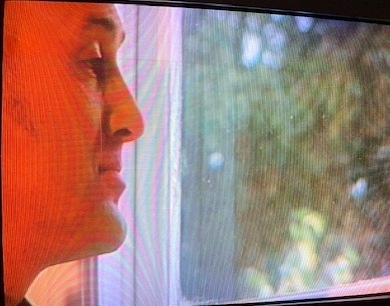
... in a burst of hot creative moment, he understood what no human being had ever perceived. The implications were utterly radical, more than radical, profoundly upsetting to traditional Newtonian physics; nevertheless, his insight has been verified countless times in the intervening 90 years.
what Heisenberg saw
There is no model, no familiar picture, no visual aid for the atom. It cannot be tethered and corralled, in terms of arriving at final understanding. The atom, in its core essence, essentially, is unknowable.
Professor Al-Khalili comments that not even mathematics can fully help us here; in every other aspect of science the maths often provide a near-absolute quantification of unseen realities – but not this time. It’s called Heisenberg’s “Uncertainty Principle.”
What does this mean?
Let’s take a step back and view the research-data Heisenberg was receiving. He'd discovered that it is possible to know or predict the speed of an electron – but if you do this, then it will not be possible to know its position, where it is. Conversely, if you assess the position, then you cannot know how fast it’s going. He determined that it’s one or the other, we can’t have both.
Early on it was thought, “When we get better measuring devices, when our instrumentation is more precise, we’ll be able to know both position and momentum.” But Heisenberg finally realized that this lack of information is not due to faulty scientific hardware, nor is this elusiveness the result of the atom being quirky or tricky or, like the Road Runner, just hard to pin down and catch. It’s not that.
Then what?
Heisenberg was the first to understand that reality – at its deepest level – is fundamentally built upon principles of chance and probability. It is not Newtonian. It is not strictly “cause and effect,” not at the core of what’s real. The best we can do regarding determining position and speed of an atomic particle is to speak in terms of probabilities: "There is a 30% chance of it being in this location" or "a 70% chance it will be traveling at such-and-such speed"; that sort of thing.
Reality, in its most basic essence, is probabilistic in nature. We will never know the exact “latitude and longitude” of an atom – because it doesn’t exist, not in any ordinary sense. And that little which we think we know about it changes when an observer, a supervising consciousness, interacts with it.
These issues are so profound, speak so mystically to the undergirdings of truth, life, the nature of being, and what’s real, that we shall be pondering it all for the next million years and beyond.
|
Werner Heisenberg:
“[In most science experiments] we have to do with things and facts, with phenomena that are just as real as any phenomena in daily life. But the atoms or the elementary particles themselves are not as real; they form a world of potentialities or possibilities rather than one of [hard-edged] things or facts.”
“If one wants to give an accurate description of the elementary particle. . .the only thing which can be written down as description is a probability function. But then one sees that not even the quality of being … belongs to what is described.”
“It was about three o'clock at night when the final result of the calculation [which gave birth to quantum mechanics] lay before me ... At first I was deeply shaken ... I was so excited that I could not think of sleep. So I left the house ... and awaited the sunrise on top of a rock.”
“I think that modern physics has definitely decided in favor of Plato. In fact the smallest units of matter are not physical objects in the ordinary sense; they are forms, ideas which can be expressed unambiguously only in mathematical language.”
“The ontology of materialism rested upon the illusion that the kind of existence, the direct 'actuality' of the world around us, can be extrapolated into the atomic range. This extrapolation is impossible, however.”
“The very act of observing disturbs the system.”
“The structure underlying the phenomena is not given by material objects like the atoms of Democritus but by the form that determines the material objects. The Ideas are more fundamental than the objects.”
“Every experiment destroys some of the knowledge of the system which was obtained by previous experiments.”
“By getting to smaller and smaller units, we do not come to fundamental or indivisible units. But we do come to a point where further division has no meaning.”
“Science no longer is in the position of observer of nature, but rather recognizes itself as part of the interplay between man and nature. The scientific method ... changes and transforms its object: the procedure can no longer keep its distance from the object.”
“Only a few know, how much one must know, to know, how little one knows.”
“What we observe is not nature itself, but nature exposed to our method of questioning.”
“Not only is the Universe stranger than we think, it is stranger than we can think.”
“The reality we can put into words is never reality itself.”
Explaining his Uncertainty Principle,” he said: "Uncertainty is NOT ‘I don't know.’ It is ‘I can't know.’ ‘I am uncertain’ does not mean ‘I could be certain’."
“I believe that the existence of the classical ‘path’ can be pregnantly formulated as follows: The ‘path’ comes into existence only when we observe it.”
“Looking at something changes it.”
“The more precise the measurement of position, the more imprecise the measurement of momentum, and vice versa.”
“...separation of the observer from the phenomenon to be observed is no longer possible.”
|
READ MORE, quotations from the fathers of quantum mechanics on the primacy of consciousness, not matter, as building material of the universe.
Editor’s note: Heisenberg’s assessment concerning the atom, by his own admission, was but smaller subset of Bohr’s “complementarity principle.” Read more on the “quantum mechanics” page.
|
culture is not character
At bible college 50 years ago one of my favorite professors was Dr. Wainwright, a scholar from Oxford and the Sorbonne. I remember him, often chuckling, as something would strike him as not quite right. For example, he was the one who taught us that many or most Greek and Latin phrases, when the layers of intimidating complexity are peeled away, hide very ordinary and prosaic meanings; e.g. the Latin term “sic” means “thus.” It’s used to highlight a textual error. In other words, “sic” means “Look! see! this error right here. I’m just quoting this passage so don’t blame me for the mashed-up job.” Things like this would ignite his chuckling.
And I recall, in a “Survey of the Fine Arts” class, he offered a wry remark concerning how highly accomplished people are not necessarily virtuous. In other words, one might speak the Queen's English, perceive the nuances of Italian opera, know one's way around an archeological dig in Crete, sport an ability to read, in the original Greek, Aeschylus’ Oresteia - that is, one might be very urbane and cultured, but “culture is not character.”
I thought of Dr. Wainwright's statement recently as I considered the great scientific accomplishments of Heisenberg; and yet, he was the one who headed the Nazi effort to build “the bomb” which, if successful, would have led all of us into a new Dark Age.
Further, we find Heisenberg referencing the extremely poetic and rapturous words of Plotinus, "the translucence," a shining through, "of the eternal splendor of the One" and of the Truth. How can one entertain such high-mindedness, but also work for the legions of evil?
There is much debate concerning the secret motives of Heisenberg. Was he, in fact, as a "mole," delaying the production of the Nazi A-bomb, or was he a true believer? There is evidence to suggest either outcome. One damning item, however, is a secret tape-recording of Heisenberg after the war in which he seems to be saying that he offered a false-front, played the Allies for suckers.
Culture is not character. Advanced education is not character. Appreciation of the fine arts is not character. Elsewhere, I’ve made the comment, but it’s good to review, that many teachers whom I respect and to whom I owe a great deal, if they keep speaking long enough, almost every one of them begin to let slip a sentiment of totalitarian leanings; of “I’m better,” “I’m above.”
How does this happen? For example, how can we have a Heisenberg, credited with the greatest scientific insight of all time, and yet have him go to work for the Nazis, plotting the destruction of enlightened civilization? And how can we have teachers who know about “going within,” about consciousness as primary, and yet espouse a subtle philosophy of “I thank thee Lord that I am not like other men”?
We are headed for a new world wherein what we are, on the deep inside, will become obvious; that is, obvious to anyone in touch with his or her “true self.” In the next world, as we’ve seen, most people are afflicted with a certain degree of egoic insanity.
What is the remedy? We need to go deeper into the authentic person – all the way down to the “rivets,” to the heart of darkness, the “false self.” It’s what Lateece warned us about. Until we do, we’ll be living in a dazed state, possibly, smiling on the outside, possessing courtesy and culture, refinement and good manners, but – all the while, on the level of the hidden person, even unknown to oneself, harboring a sense of “I am better,” “I am above.”
|









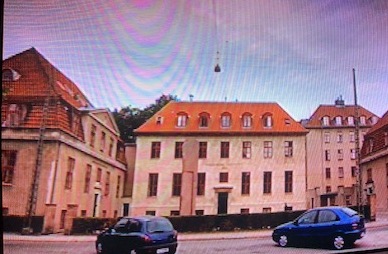
.jpg)

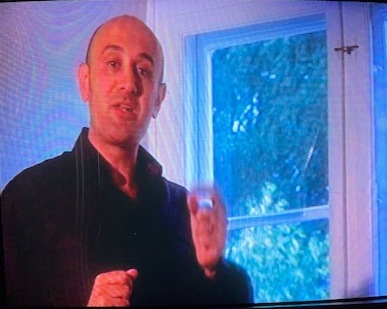
.jpg)

